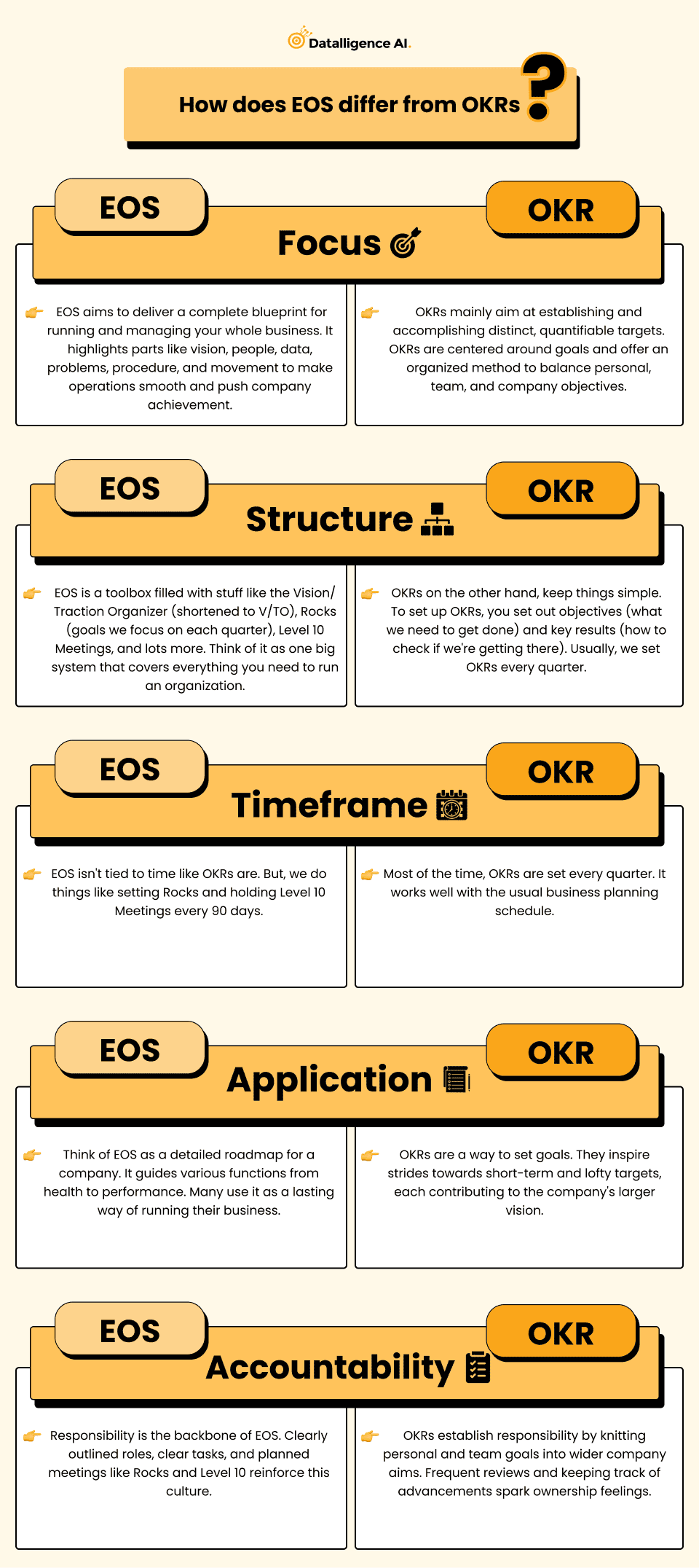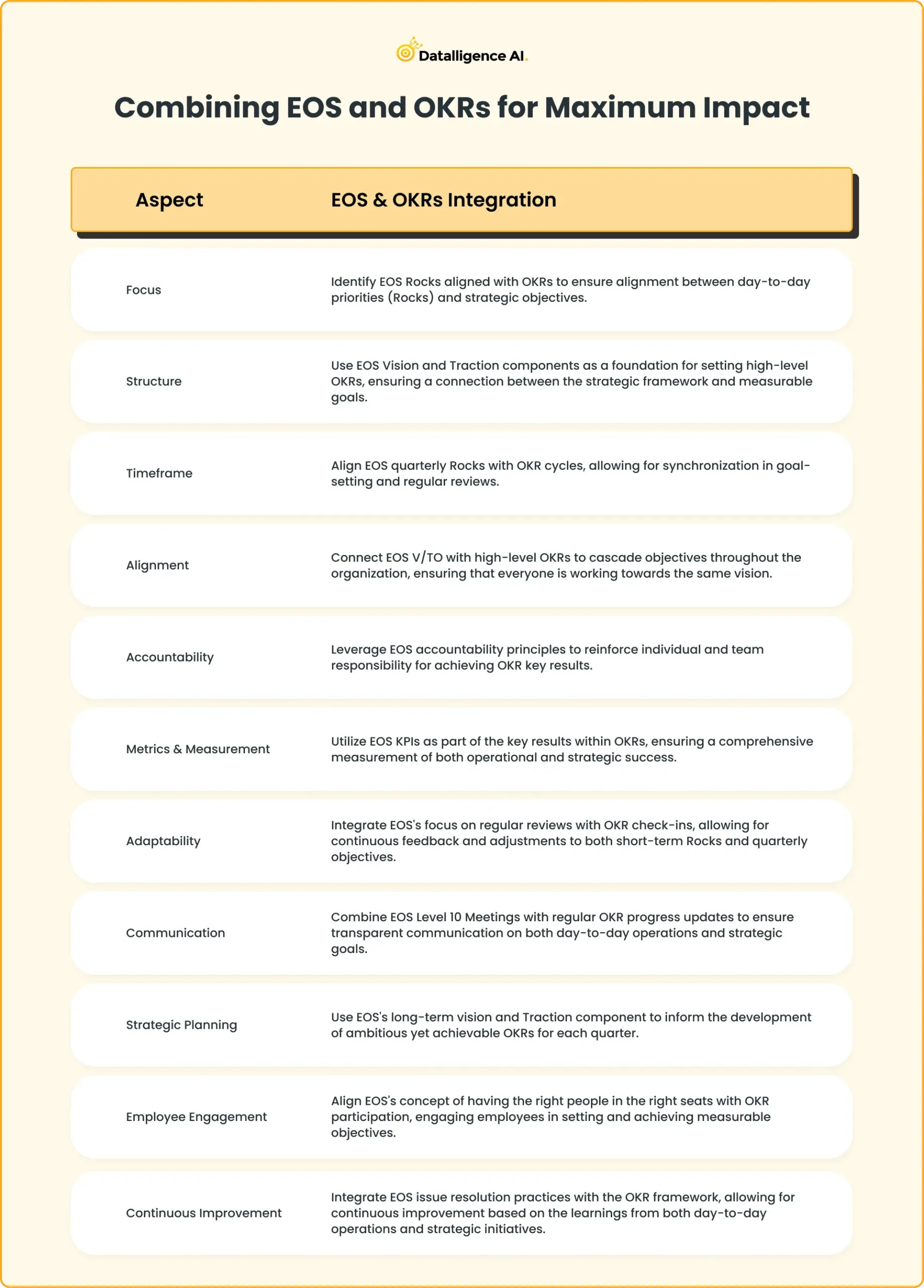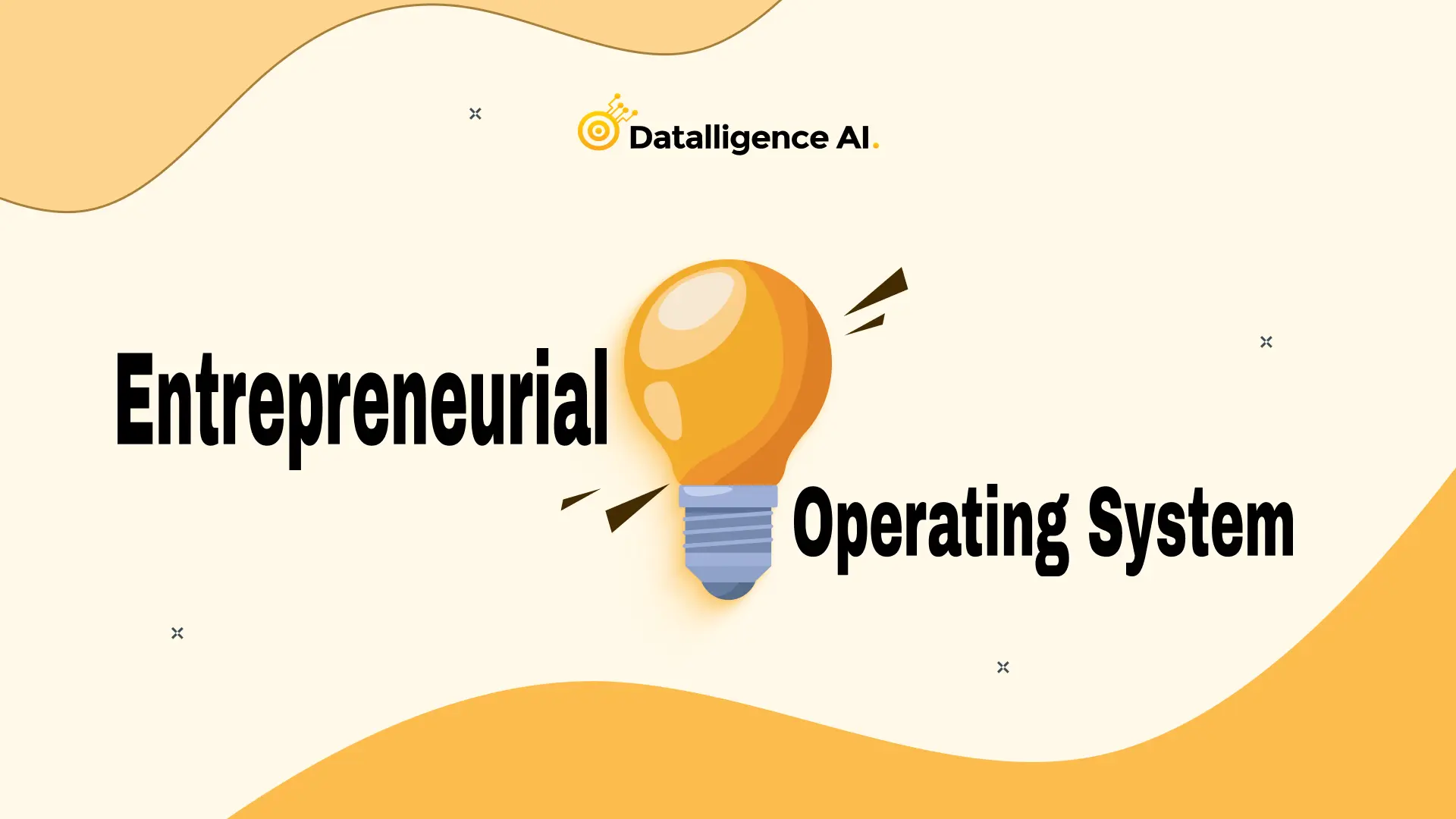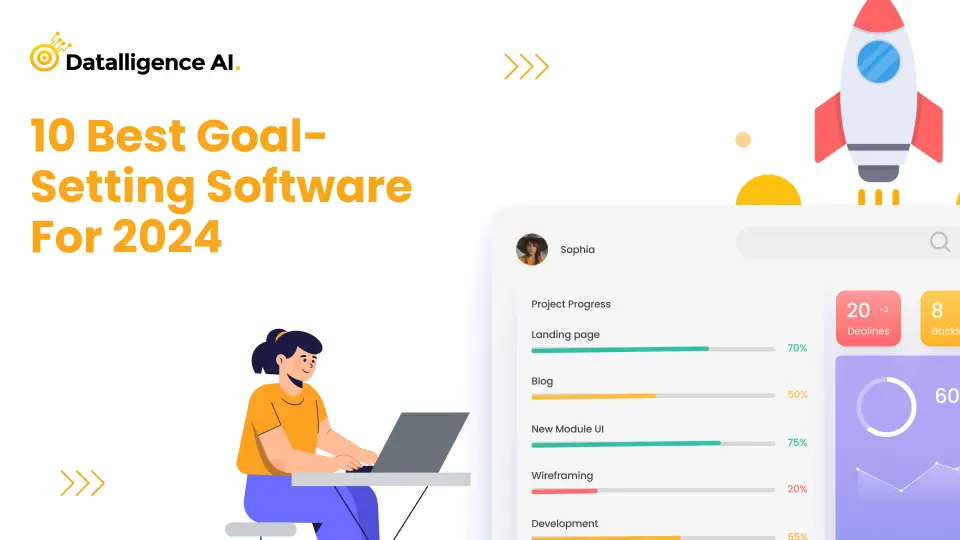Organizational management and goal-setting can be complicated fields, but businesses can succeed at unprecedented levels if they have the right frameworks and tools. OKRs (Objectives and Key Results) and EOS (Entrepreneurial Operating System) are two well-known approaches in this field. While each approach has unique qualities of its own, it is crucial to understand how the approaches differ and can be combined to promote efficiency, alignment, and growth in any business.
This article will define EOS, discuss how it differs from OKRs, and show you how to combine the two methods for maximum company advancement. We will look at the concept of EOS, its components, and its focus on business owners. In addition, we will review the fundamentals of OKRs and highlight the key areas where EOS and OKRs differ and overlap. Finally, we will look at how these two frameworks can work together to achieve organizational goals and maximize output.
What is EOS?
EOS, short for Entrepreneurial Operating System, is a holistic management system. It aims to simplify an organization’s goals, merge teams, and make processes efficient.
The major parts of the EOS system include:
- EOS Model
- EOS Process
- EOS Toolbox.
RephraseThis model stands on six pillars — Vision, Process, People, Data, Traction, and Issues. It’s a roadmap to higher organizational performance. Plus, the EOS process guides
business owners to select suitable tools from the toolbox. Some tools are vision/traction organizer, accountability chart, scorecard, meeting pulse, and “Rocks”, which are unique goals set for every quarter.
These six components make up the EOS framework.
- Vision: Form a straightforward, motivating goal for the team.
- People: Place the right folks in suitable jobs.
- Data: Become more data-driven by identifying and tracking key performance indicators (KPIs).
- Issues: Address and solve problems systematically.
- Process: Document and optimize core processes for efficiency.
- Traction: Introduce discipline and accountability through effective meetings and goal alignment.
To successfully implement EOS, entrepreneurs can utilize the EOS process, which combines these components with a set of tools tailored to the needs of the business. Among these are the “Rocks” (specific goals for each quarter), meeting pulse, scorecard, accountability chart, and vision/traction organizer.
How Does EOS Differ from OKRs?
Although both EOS and OKRs are goal-setting techniques, their methods, target audiences, and time frames are different. Comprehending these distinctions is essential to capitalizing on the advantages of every framework and combining them skillfully.

Combining EOS and OKRs for Maximum Impact
Combining EOS and OKRs for Maximum Impact
Combining the EOS and OKRs creates a powerful synergy that aligns day-to-day operations with strategic objectives. EOS provides a comprehensive framework for managing businesses, emphasizing clarity, accountability, and continuous improvement.
The following table illustrates how EOS and OKRs can be seamlessly combined for maximum impact:

This integration provides organizations with a seamless and powerful system that balances immediate operational needs with long-term strategic goals, fostering a culture of accountability, transparency, and continuous improvement.
Real-Life Examples of EOS Scorecards
Let’s study a few real-world examples to understand better how EOS scorecards can drive business growth:
Avea Solutions: Consider Avea Solutions, a company dealing with behavioral health billing. They were struggling with employee morale and output due to a heavy workload. However, their CEO managed to refocus and motivate the staff through the traction method and EOS in their meetings. Consequently, employee engagement and productivity received a boost.
Facebook: Take the example of Facebook, a tech giant that leveraged OKRs in its EOS approach. This strategy led to exponential business growth, fueled innovation, and heightened user experience due to the high standards and alignment of key outcomes.
These illustrations show how well EOS and OKRs work together to improve company performance and produce noticeable outcomes.
EOS Scorecard Examples
The EOS scorecard is one of the most effective instruments in the EOS toolbox. The scorecard gives an overview of the organization’s progress toward its objectives and acts as a visual representation of key performance indicators (KPIs). A few examples of metrics that could be on an EOS scorecard are as follows:
Revenue Growth: Calculate the revenue growth percentage about the preceding quarter or year.
Customer Satisfaction: Utilize feedback systems or surveys to monitor customer satisfaction ratings.
Employee Engagement: Surveys and pulse checks can be used to track employee engagement levels.
Profit Margin: Analyze the company’s profitability by monitoring profit margins over time.
On-Time Delivery: To evaluate operational efficiency, calculate the proportion of orders that are delivered on schedule.
These are only a few instances; an EOS scorecard’s precise metrics will differ based on the organization and its objectives. The secret is to choose metrics that support the mission of the company and offer useful information for making decisions.
Conclusion
In conclusion, EOS and OKRs are effective instruments for establishing and coordinating goals inside businesses. Although EOS offers entrepreneurs a comprehensive operating system, OKRs offer a flexible framework that can be implemented in a variety of industries and organizational settings.
Leveraging the strengths of both frameworks requires an understanding of the fundamental distinctions between EOS and OKRs. Businesses can build a potent system for propelling growth and realizing their vision by fusing OKRs’ emphasis on individual and team goal setting with EOS’s focus on process and alignment.
At Datalligence.AI, we understand the importance of goal-setting and alignment in driving business success. Our innovative AI-powered platform enables organizations to implement EOS and OKRs effectively, providing the tools and insights needed to optimize performance and achieve strategic objectives. Contact us today to discover how Datalligence.AI can support your journey towards success.











